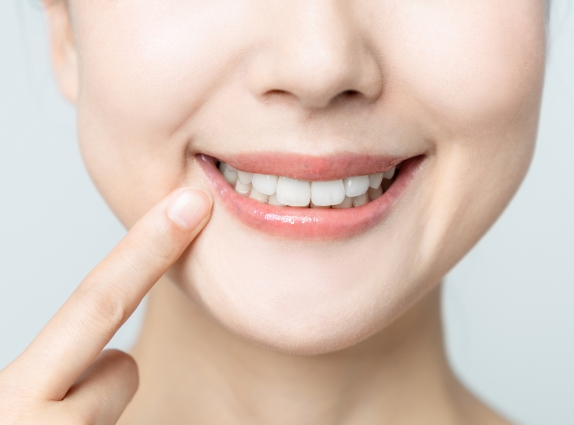
Dreaming of a picture-perfect smile? Dental bonding might be the answer! This cosmetic dentistry procedure offers a quick and relatively painless way to address minor imperfections. But before you schedule your appointment, it’s crucial to understand the key facts of dental bonding. —what it entails, its benefits, potential considerations, and what you can expect during and after the procedure.
With this knowledge, you can confidently decide and make sure that dental bonding is the right choice for your smile transformation. Read the blog further to explore what steps are involved in this popular cosmetic treatment.
What Can Dental Bonding Fix?
Dental bonding is a versatile treatment for a variety of smile concerns. It can effectively address:
- Minor Chips and Cracks: If you have a chipped tooth due to an accident or wear and tear, dental bonding can restore its natural shape and appearance.
- Gaps Between Teeth: Small gaps between your teeth can be filled with bonding material, creating a more even and aesthetically pleasing smile line.
- Discoloration: For mild to moderate tooth discoloration that doesn’t respond well to whitening treatments, bonding can cover the affected area and create a brighter appearance.
- Reshaping Teeth: Dental bonding can reshape slightly misshapen teeth, creating a more symmetrical smile.
It’s important to note that bonding has limitations. It’s not suitable for major structural issues like large cracks, extensive tooth decay, or severely misaligned teeth. These situations might require alternative treatments like crowns or veneers.
Durability and Maintenance
Dental bonding offers a swift and cost-effective procedure. However, it’s not as durable as other cosmetic dentistry options like porcelain veneers. The bonding material can chip or break with excessive force, so be mindful of biting on hard objects like ice or nuts. While proper care (brushing, flossing) can extend its lifespan, bonding typically lasts 3-7 years and might require repairs or replacements more frequently than other options.
Maintains Your Smile’s Shine
Unlike natural tooth enamel, dental bonding material is susceptible to staining. Coffee, tea, red wine, and certain foods cause discoloration over time. To maintain a bright smile, you must practice consistent oral hygiene and potentially adjust your diet to minimize staining risks. Regular professional cleanings by your dentist can also help remove surface stains and maintain the bonding material.
Alternatives To Think About!
Depending on the particular issue you wish to resolve, alternative treatments might be available. Here’s a quick comparison:
- Veneers: Porcelain or composite resin veneers are thin shells bonded to the front surface of your teeth. They offer a more durable and stain-resistant option compared to bonding, but they require removing a small amount of tooth enamel during the procedure.
- Crowns: Crowns are caps that completely encase the tooth. They are typically used for more severe structural issues or extensive decay, offering superior strength and protection compared to bonding or veneers.
- Teeth Whitening: If your primary concern is minor discoloration, professional teeth whitening might be a simpler and potentially more affordable option compared to bonding.
Discussing all these alternatives with your dentist will assist you in selecting the treatment that aligns best with your needs, budget, and desired outcome.
- Finding the Right Dentist:
A qualified & trusted dentist is crucial for achieving successful and aesthetically pleasing results with dental bonding. Here’s what to look for:
- Expertise in Cosmetic Dentistry: Seek a dentist with a proven track record in cosmetic procedures like bonding and veneers. Look for their website portfolio or online reviews to see examples of their work.
- Focus on Communication: Choose a dentist who listens to your concerns and clearly explains the bonding procedure, potential risks, and aftercare instructions.
- Comfortable Environment: Find a dentist’s office where you feel relaxed and comfortable. A positive experience can make the bonding process less stressful.
Don’t hesitate to ask questions & express your expectations during consultation!
Cost Considerations
Dental bonding is generally less expensive compared to veneers or crowns. However, the exact cost depends on factors like the complexity of the procedure, the amount of bonding material used, and your dentist’s location. Be sure to inquire about the cost upfront and discuss financing options if needed.
Don’t Rush Your Smile: Facts of Dental Bonding and a Thoughtful Approach
Deciding on dental bonding is not a decision to be taken lightly, as it involves enhancing the appearance of your teeth. Before opting for this procedure, it is crucial to consider essential facts that will impact the quality and longevity of the results.
Failure to do so could result in unsatisfactory outcomes, additional costs for repairs or replacements, and even potential harm to your oral health. Therefore, consider the facts of dental bonding and carefully evaluate all aspects before making a final decision, as the consequences may be far greater than initially anticipated.
FAQs:
1. What is dental bonding, and what issues can it address?
Dental bonding entails the application of a tooth-colored composite resin to fix chips, cracks, or discoloration in teeth, as well as to fill gaps and reshape teeth for a more uniform look.
2. How long does dental bonding last?
The longevity of dental bonding can vary depending on factors such as oral habits, diet, and the location of the bonded tooth. Typically, bonding can last between 5 to 10 years with proper care.
3. Is dental bonding a painful procedure?
Dental bonding is usually not painful and often does not require anesthesia unless it is used to fill a cavity. The process involves minimal removal of tooth enamel and is generally well-tolerated by patients.
4. Are there any limitations or risks associated with dental bonding?
While dental bonding can effectively enhance smiles, it may not be as durable as other cosmetic options like veneers or crowns. Bonded teeth can stain over time, and bonding material can chip or break with excessive force or poor oral habits.
5. How do I maintain dental bonding results?
Keeping your dental bonding maintained involves practicing good oral hygiene habits, such as brushing and flossing regularly, avoiding biting on hard objects, and attending regular dental check-ups for professional cleaning and evaluation.
